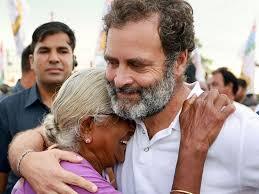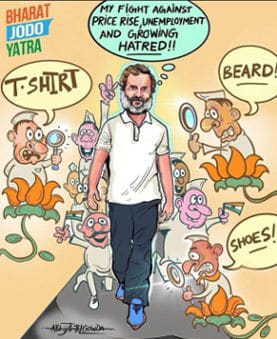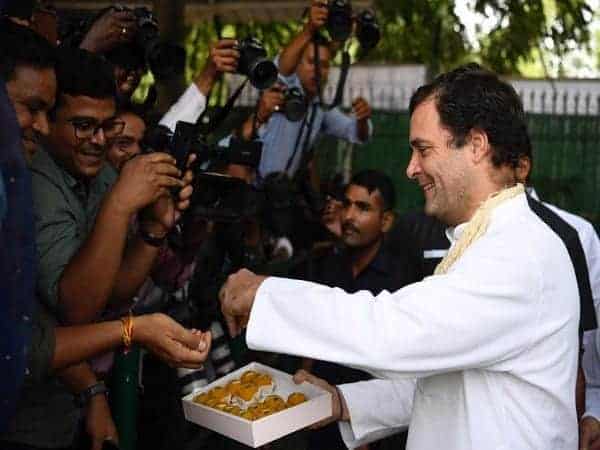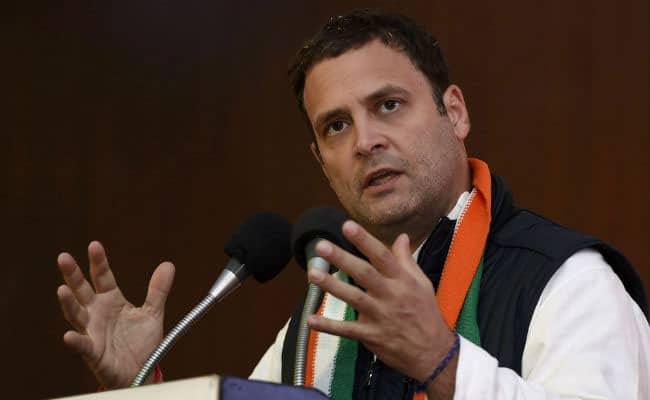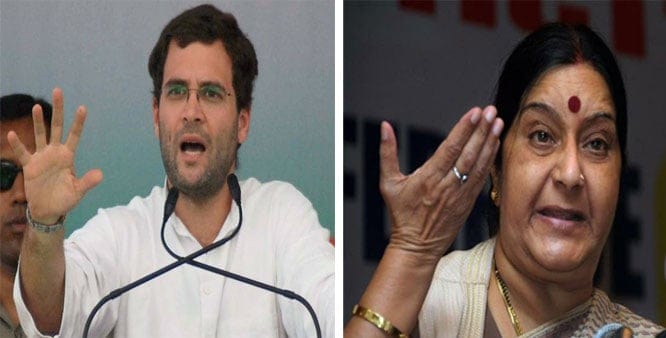Scion of the oldest and most influential political dynasties of India, Rahul Gandhi, had the weight of India’s expectations on him. Despite the odds stacked against him, he has managed to rise as the leader of the opposition. His new cult status warrants a deep dive.
Our story begins in the run-up to the 2014 general elections. Rahul Gandhi, who had been a “part-time politician” of sorts, was the face of Congress’s fight against Modi. RaGa was set to inherit all of India’s frustrations with the Congress party. Issues with the party’s functioning and rampant corruption stoked the embers of frustration; the rising debate against nepotism only added fuel. An India in the trenches of international PR and general morale yearned for a leader who would return her to glory.
Narendra Modi, a leader of humble beginnings, was the alternative. People saw in him the promise of realising India’s potential in all matters global, economic, and internal. Faced with the charm and political prowess of the two-time Gujarat chief minister, it was to no one’s surprise that Congress suffered a crushing blow in the election.
The onus then fell on Rahul to prove to the people that he could still lead a strong opposition to the government. Spoiler: He did not. His repeated political missteps proved to the people how out of touch he was with the pulse of India’s needs. Opportunities came and went, but he failed to capitalise. In the initial stages of Modi’s government, when dissent was still tolerated, protests raged across the country, yet the Congress, then virtually led by Rahul Gandhi, managed to fumble the strong buttress.
Monikers and tags were being thrown around—Pakistani, terrorist, anti-national—and in this giveaway, RaGa managed to snag one for himself—hilariously and demeaningly short pappu.
The meme factory worked overtime to roll out messages, videos, and WhatsApp forwards about how Congress’s Raja Beta (darling son) had proven himself to be India’s favourite jester. His incompetence was a gift that kept on giving. The Congress had created a self-feeding mechanism where they only needed to do the bare minimum before loyal Modi supporters would rush to delegitimize their accusations.
But you didn’t click on this article to read a hilarious and scathing run-down of what went wrong. No, you’re here to understand what went right.
Tired of the opposition’s lack of sustained dissent, the people of India decided to take it upon themselves to put up a fight. The farmer’s protest, frustrations with how the pandemic was handled, rising communal tension, and an overwhelming insecurity among the youth regarding unemployment, and the tensions in Manipur were triggers. Prime Minister Modi’s resolve to never address these issues contributed heavily. He was no longer the messianic leader from before. The people saw in him a cold, calculating, and ruthless sovereign.
This alienation left a cold void that Rahul Gandhi rushed, walked to fill.
The Bharat Jodo Yatra was a milestone in contemporary Indian politics. Roughly 4,080 kilometres long and spanning the states of Kerala to Jammu-Kashmir, this yatra was a means for Gandhi to win the people’s confidence. Dressed as one of the masses, Rahul Gandhi cut out the middleman and delivered democracy to people’s doorsteps. In him, the public began to see a man who was willing to shed his comforts, a contrast to the Prime Minister, who after two terms in office had fashioned a soot-boot ki sarkar. To Congress’s credit, the momentum from the march was not allowed to die. A second edition of the yatra was announced, now titled the Bharat Jodo Nyay Yatra, which sought to cover Manipur to Maharashtra.
Despite these efforts, a scattered Congress knew that it couldn’t hope to stand against the leviathan BJP-led NDA. It sought to pack a punch with a ragtag team of estranged parties, who decided to put aside their differences to defeat the big evil. INDIA, or the Indian National Developmental Inclusive Alliance, was supposed to thwart the BJP’s third consecutive term. The parties had realised (perhaps a bit too late) that their differences meant the splitting of the opposition vote. INDIA was a way to remedy that.
The tea leaves foretold a possible rise to power. Against all odds, Rahul Gandhi had managed to change the public’s perception of him. The “If not Modi, then who?” question now had a clearer answer.
Just four months ago, the historic 2024 election results came out. BJP won just 240 seats, 32 less than the requirement for a single majority, and about 160 less than the 400 paar claim. Congress rose as an underdog and won 99 seats, officially securing its opposition status after ten years. Rahul Gandhi, the titular lead of this article, won from the Wayanad constituency and was hailed as the leader of the opposition.
The two months since this drastic shift in power dynamics have not been without their share of drama. Just weeks into the new parliamentary session, Gandhi hit multiple nerves over his speeches in the house. In the maiden speech itself, he accused the BJP of misappropriating the Hindu religion and forgetting its values of ahimsa and tolerance. From the Chair of the House to the Home Minister and the big boss—the Prime Minister himself—everyone was livid. Enquiries were made and debates were launched over Gandhi’s remarks, yet he only offered a collected response, and did not fall into the semantics of it all.
2024 has seen Rahul Gandhi grow into his own as a true leader worthy of consideration. Work during the run-up to the Lok Sabha elections aside, the politician now has the upcoming Vidhan Sabha elections in his sight. Rahul Gandhi is campaigning in the states of Haryana and Jammu-Kashmir to consolidate support and moreover, consolidate his image as the leader of opposition. Though the BJP managed to persevere through the General Elections this time, it was a pyrrhic victory at best. Gandhi, with his state election campaigns, seems to be in the mood to remind the public of that fact, to remind them that the powers that be, are not as infallible as they had seemed.
In a rally in Srinagar, Rahul Gandhi was quoted as saying, “…before the Lok Sabha elections, people used to say that Narendra Modi has a 56 inch chest, no one says that now. The mood of the country has changed. Earlier, he used to talk with confidence, but now the INDIA bloc has broken the psychology of PM Narendra Modi.”
RaGa seems to be riding on the wave of INDIA’s show at the election, and the new-found confidence has invigorated people’s faith in him (perhaps his faith in himself too). His strategy seems to be one of recounting the injustices suffered to the people of Jammu and Kashmir; he brought up the change in status as the former state has now turned into a Union Territory. Promising to the people that should Congress be brought to power, they will prioritise the reinitiation of JnK as a state. The ploy is to make the people realise that they have an alternative, one who has the pulse of the people’s wants better than a doctor.
His work in Haryana also begs notice. Rahul Gandhi extensively toured the length and breadth of the state; with over half-a-dozen rallies and road shows, he aims to prove that he can lead just as successful of a vanguard as in the Lok Sabha elections . “BJP ja rahi hai, Congress aa rahi hai” (BJP is losing, Congress is winning), was his battle cry. Mr. Gandhi in his passionate speeches never missed a chance to hit the BJP in its tightest nerve with accusations of crony capitalism and attempts to destroy the spirit of the constitution. In turn, he reiterated his party’s guarantees of ₹2,000 monthly assistance to women and providing cooking cylinders for ₹500.
The BJP called to its defence the Prime Minister himself and the ever-reliant Mr. Yogi. Never to be underestimated (recent pyrrhic victories notwithstanding), the dynamic duo is BJP’s strongest ace. It’s a strategically sound choice to bring them in when faced with such an onslaught. Though what the BJP fails to notice is that the arrival of these players grants Mr. Gandhi’s opposition more legitimacy than is good for the reigning party. The Prime Minister’s involvement is an acknowledgement of the fact that the party is insecure of its standing and wants to leave no stone unturned to gather support.
We are thus at a curious point in Indian politics where a politician once scorned and mocked has made the rebound of the century and now stands between the centre and absolute power.
The leading party is still just as harsh and his critics remain as is. However, the tag pappu is nowhere to be seen. Even the staunchest rival cannot begrudge him in his victory. From riches to rags, and then back to riches, Rahul Gandhi has created a cult following for the history textbooks.
Read Also: Rahul Gandhi and His Changed Style of Politics
Featured Image Credits: The Hindustan Gazette
Anvesha Tripathi

